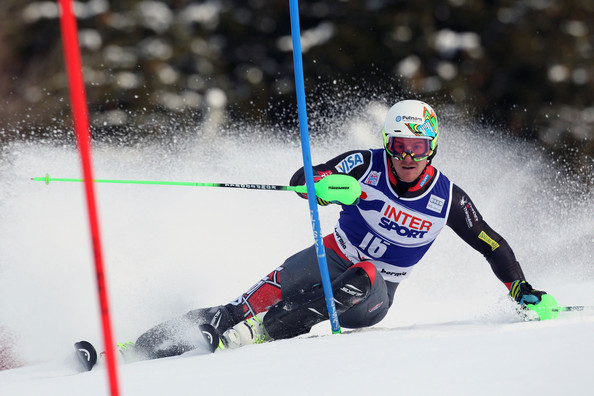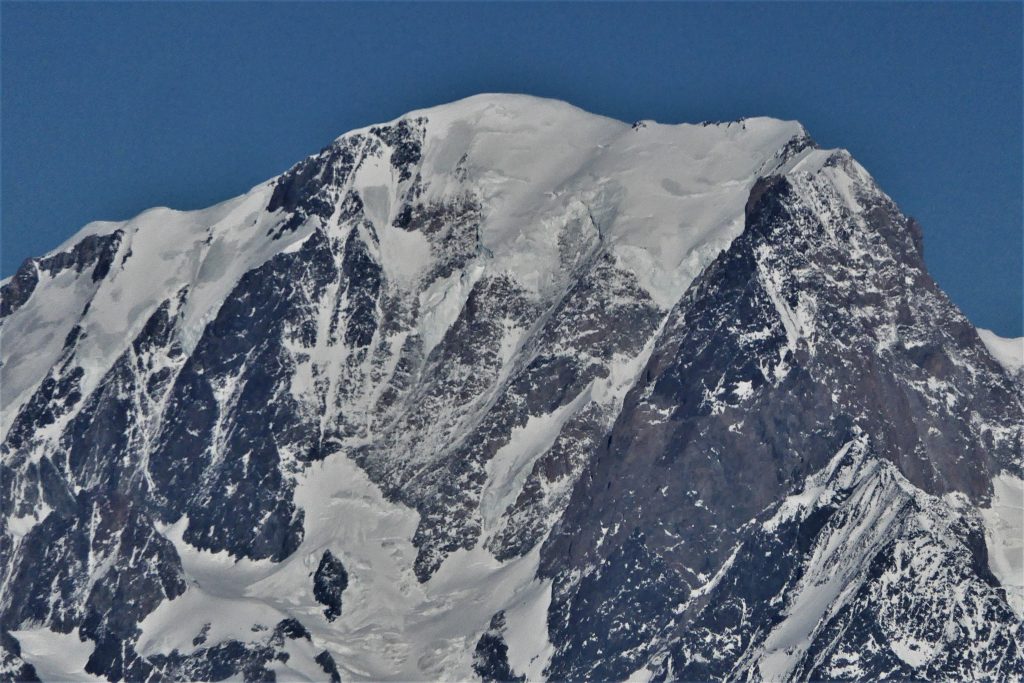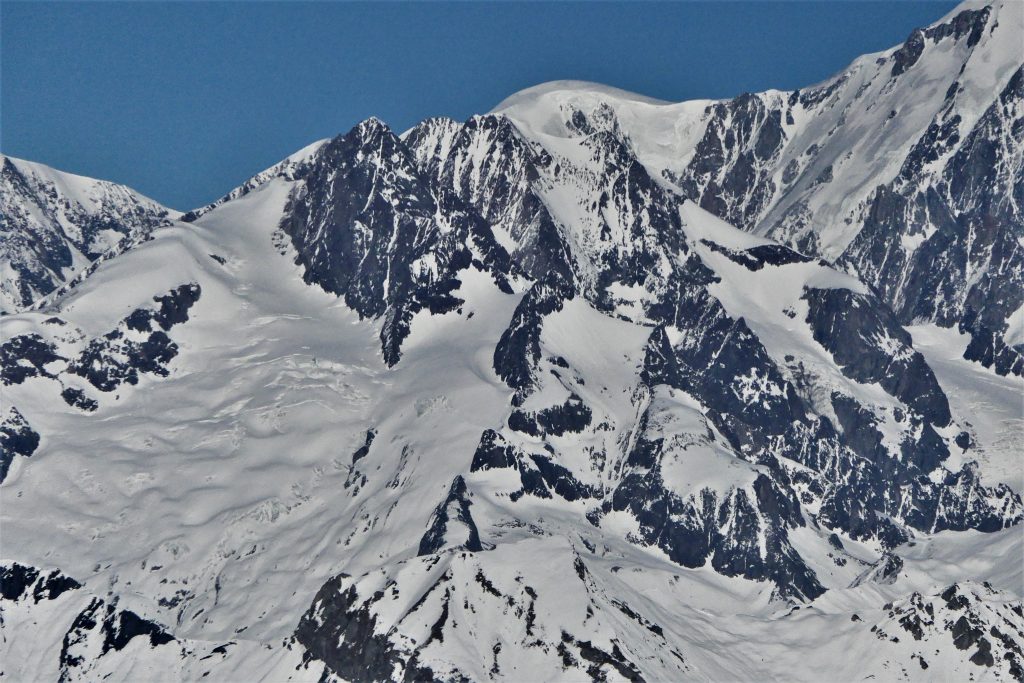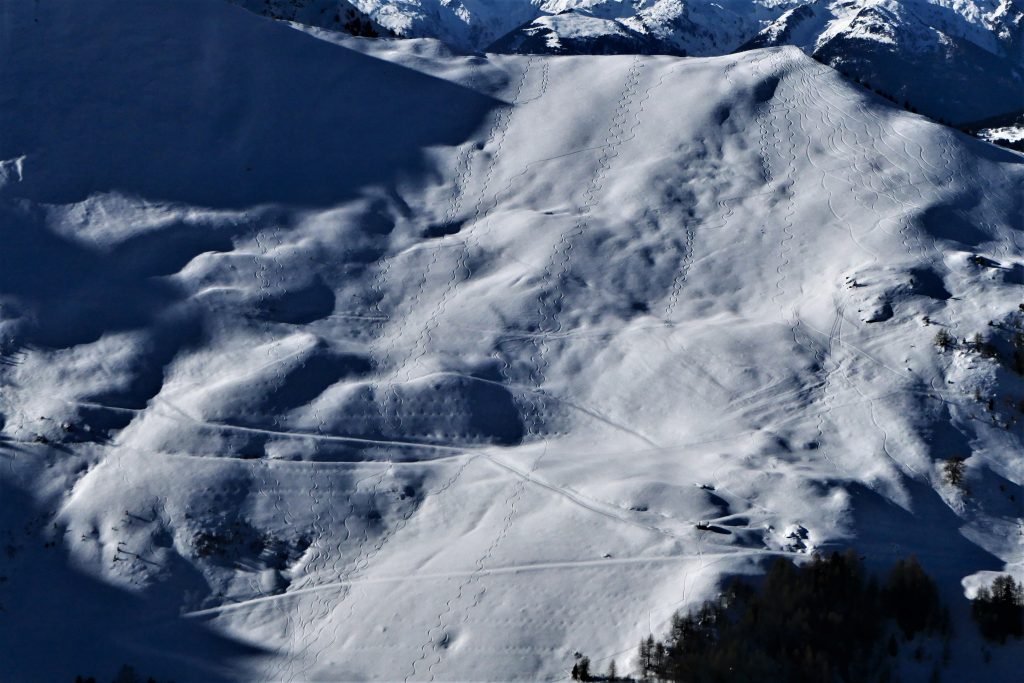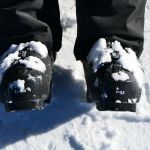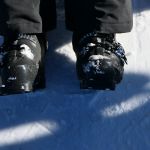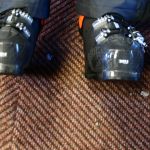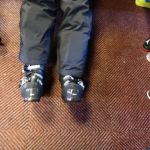Julia and Mick hadn’t skied for a couple of years but made it successfully to France this time through a moving labyrinth of obstacles. Sunshine, fresh snow with a good base and quiet pistes provided the ideal setting for a return to skiing.
The session began with first observing then filming the skiing before starting work on changing anything:
Faults aren’t faults
I don’t like labelling “faults” in skiing – because they generally aren’t faults. Most so called faults are effects caused by misinformation in the form of entrenched pedagogic dogma. When even Newton’s laws are openly and completely contradicted there’s not much chance of anything working properly. My preference is to simply describe the learned actions that cause problems and false limitations.
1. Both skiers are tending to stem the uphill ski onto its inside edge and transferring weight to it (correctly as taught) – consequently moving the centre of mass in the completely wrong direction relative to the skis. Sometimes the displacement of the centre of mass is visible even relative to the turn itself.
2. It turns out that both skiers have badly misaligned cuffs on the ski boots with respect to their morphology and bone structures.
Boots before aligning…
Boots after aligning…
Re-Programming
I have a theory that consciousness is a simple feedback loop – allowing us to re-program our own behaviour and actions. Most animals can’t do that – so they have little or no consciousness.
The way forward in skiing from this point is through learning a new, correct and efficient set of movements and their underlying principles – namely Skating and Dynamics. If you learned skiing from the standard instruction programs then it definitely needs some re-programming. When working with correct information there is constant and lasting improvement and conscious repetition is not frustrating but is rewarding and enjoyable. Those results are the best indicator that you are on the right path.
SKATING
Skating was awkward for both skiers because the ski boot alignment was way out. However skating was used to surreptitiously introduce dynamics. When you skate you don’t propel yourself forward with your legs – you fall forward with gravity as the ski diverges and then catch yourself by placing the other leg beneath your body. You push to raise yourself up all the time – the forward motion comes from gravity. Falling is how we efficiently run, walk, skate or ski. Everything works better when we work along with falling – even amplifying it – rather than against it. “Balancing” in the context of those activities is equivalent to fighting against yourself.
We used some active pronation of the feet, including turning the feet “outwards” in the turn and engagement of the adductor muscles to help overcome the ski boot alignment problem temporarily.
DYNAMICS
Formally introducing dynamics in the form of ski exercises just followed my usual pattern – found at the following link… http://madeinmountains.com/dynamics/
Success was reasonable but limited mainly due to the ongoing ski boot problems.
Pushing the body downhill into a turn from the uphill leg was encouraged – without the need to stem and get onto the inside edge of the ski. Either edge can be used – it’s the motion of the centre of mass that counts above all else.
The Skier’s Job is to Fall Over! The Ski’s Job is to Lift the Skier Back Up.
Rhythmic turning not only enables falling/pushing into a new turn but also the falling out of the existing turn as the body passes over the skis perpendicular to the slope – combining the lifting power of the ski cutting underneath the Centre of Mass (CoM) trajectory and gravity pulling the CoM downhill. Traversing kills the dynamics momentarily as the skier blocks the flow of the CoM in the vertical plane while crossing the slope.
Being “forward” is largely a consequence of dynamics. Actively launching the CoM downhill tends to place the skier on the fronts of the skis as they begin to come round. Not using dynamics guarantees that you end up on the tails of the skis and back of the boots.
The next video shows a far more active/dynamic approach to skiing and the skiers feel when it’s working. Some of the stemming going on is totally unconscious – which is why conscious effort is needed to retrain the actions.
DYNAMIC RANGE
Both skiers were introduced to the idea of dynamic range – the fact that the harder you try to “fall over” the more stable you become. One objective in improving skiing is to extend this range – which is where most “ski technique” is actually focused. Here’s an image of an elite racer (Ted Ligety) showing some of the physical limits of dynamic range.
